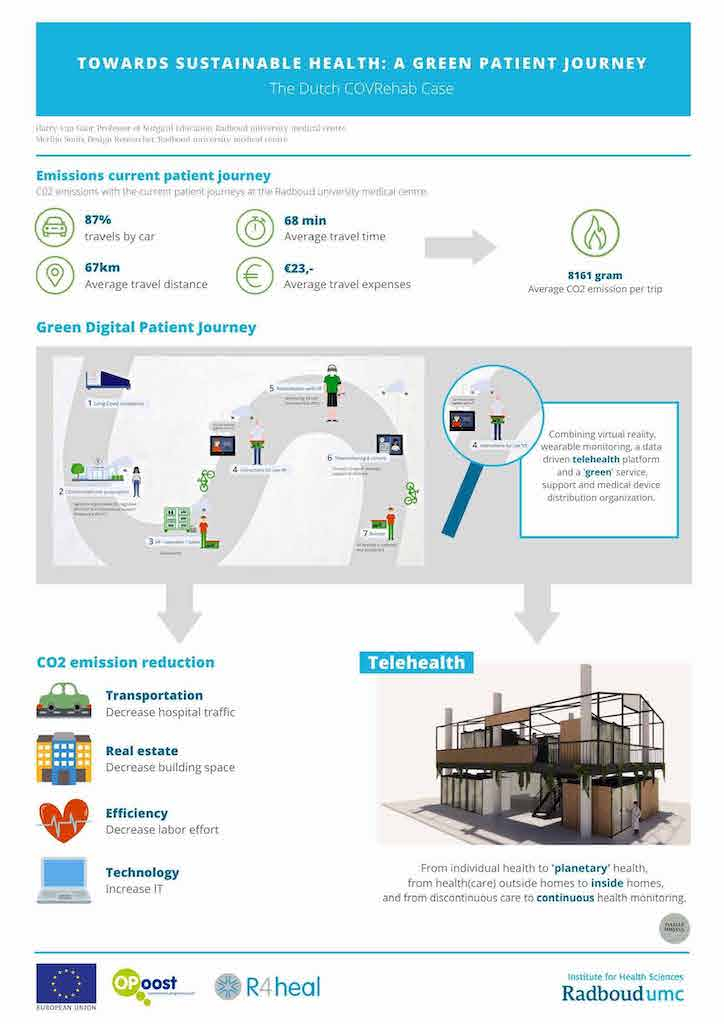Healthcare / Patient experience
European Healthcare Design 2022
Towards sustainable health: a green patient journey
By SALUS User Experience Team | 04 Oct 2022 | 0
This poster describes a project to design a ‘Green Digital Patient Journey’, in which we aspire to an optimal use and integration of technologies to increase the wellbeing of patients who need support from a primary care practice or hospital.
Abstract
Health has long been regarded as “the absence of disease and infirmity”. Over the past years, several initiatives have aimed at redefining health towards wellbeing and flourishing. This ‘positive health’ concentrates on values such as autonomy, safety and relationships. Today’s challenges related to climate change and global warming ask for an even more holistic definition of health: from human health to planetary wellbeing. However, healthcare is challenged by a large demand for treatment and too few healthcare providers. A sustainable healthcare model is required that is not only sustainable, in the sense that all patients can be cared for, but that also places planetary health central in each process. Digital health and wellbeing can be instrumental to achieving this sustainability.
Practical application: Digital health technologies are increasingly used in healthcare today. Digital health refers to all technologies that inform decision-making and medical practice. Digital health enables the shift from a disease-centred healthcare system towards one focused on wellbeing at the individual, communal, societal and environmental levels. This is achieved by optimising the inclusivity, access, affordability and sustainability of healthcare and wellbeing resources, with lowering carbon footprint and the amount of waste.
Outcomes: We designed a ‘Green Digital Patient Journey’, in which we aspire to an optimal use and integration of technologies to increase the wellbeing of patients who need support from a primary care practice or hospital. For this design, we shifted the classical paradigm of care, where patients visit the care provider on appointment, towards one where providers visit the patient on their request, where health is not considered as individual absence of disease but planetary wellbeing, and where visits shift from physical close to virtual remote encounters. We tested this design in a use case of long Covid rehabilitation, combining virtual reality, wearable monitoring, a data-driven telehealth platform, and a ‘green’ service, support and medical device distribution organisation. Outcomes and experiences revealed a range of innovative ideas shifting to a virtual connected health and wellbeing solution beyond imagination.
Implications: The Green Digital Patient Journey is a useful design concept for shifting paradigms in healthcare from solving disease to holistic wellbeing, from individual health to ‘planetary’ health, from health(care) outside to inside homes, and from discontinuous care to continuous health monitoring. For the operationalisation of this digital health design concept, healthcare design resources should be increasingly allocated to green, virtual connected health systems initiatives.
Organisations involved

